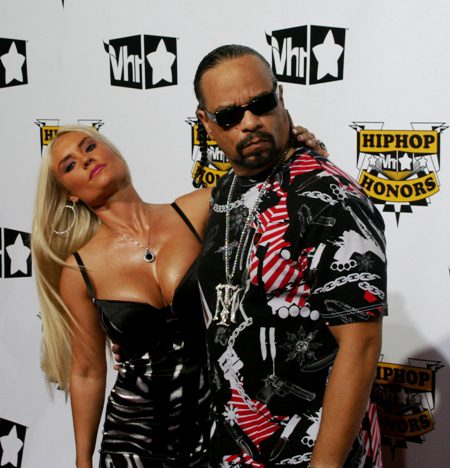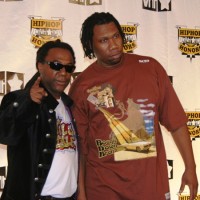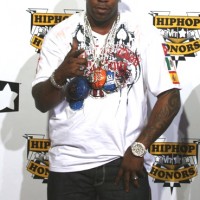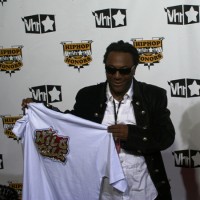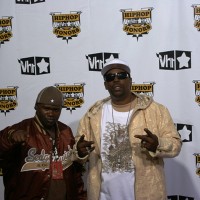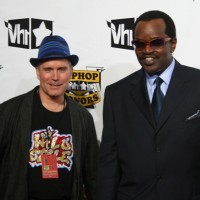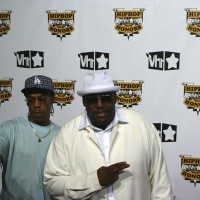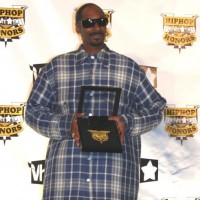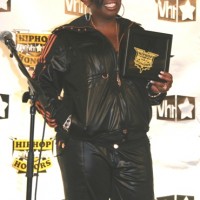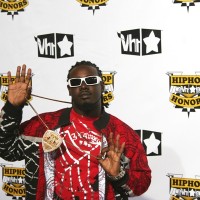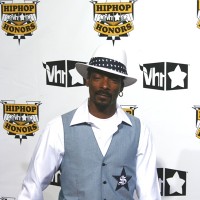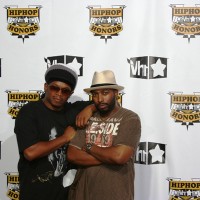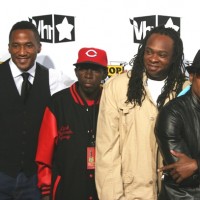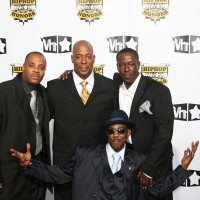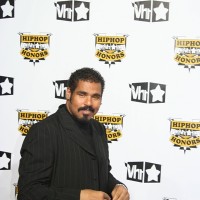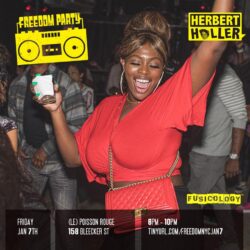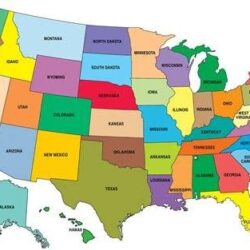At the 2007 VH1 Hip Hop Honors Grandmaster KRS-1 sat at a free table and surrounded by a small crowd of reporters spoke his mind. The press room just closed down, celebrities and most reporters left or were on the way out. Snoop Dogg was walking out with a couple of NFL worthy guys walking next to him. Their job was simple – don’t let anyone next to the LBC’s finest. Passing by the small table Snoop abandoned his bodyguards and walked right on over to KRS. ‘Teacha’, he said ‘Thank You’. He bowed down a bit and shook Kris’ hand before leaving. Why did a true OG do that? What was it that made him pay his respects to the man they call Teacha, before departing back to the sunny Cali?
KRS-1 wasn’t always preaching peace, love, unity and fun. He was always advocating knowledge as power thou. That knowledge is what got him where he is now. The great thing is that he doesn’t tell you what to think or even how to think. He just wants you to think and learn (just go back to his You Must Learn track). The original ‘Stop the Violence’ movement is almost 20 years in the making and The Blastmaster restarted it in 2007. At first with vocal contributions from 50 Cent, Busta Rhymes, Snoop Dogg, Fat Joe, Cassidy, Lil Wayne, Rick Ross, Lil Mama, Talib Kweli and MC Lyte he brought more light to it. Then the now infamous LA studio session with Nelly, David Banner, The Game, Chamillionaire and a multitude of other artists took place. About a month ago KRS got the cream of the crop of the old school of Hip Hop at Jay-Z’s studio in NYC for the next step in his movement.
Many wonder why did the man who made a song called 9mm Goes Bang got an artist like 50 Cent, who is known for his violent lyrics and an artist like Snoop Dogg, who had more than a fair share of his problems with the law, involved in this movement. The answer is simple. You don’t have to be a black man in America to see that there are problems with the black men in America. Black artists in Hip Hop have an enormous power as role models to influence these trends. Here are some facts to consider:
According to NYPD, in NYC alone, 40% of all violent crimes belonged to African-Americans in 2006, while they only constitute 25% of the population. In April of 2008 NYPD posted new stats that are far scarier. Violent crimes are on the rise. The figures show murders are up 24.7 percent, from 89 during the same period last year to 111. Rapes jumped 13.8 percent, from 324 to 369. Robberies rose 4.5 percent, from 4,595 to 4,803.
A recent (July 2008) study by the nonprofit Black AIDS Institute was just released that about 3. 3% of the city’s black population is infected with the HIV virus, compared with 3. 1% of blacks living in Nigeria.
While 70 percent of all white men are working, only 60 percent of black men, and 49 percent of those between the ages 18 and 24, can say the same.
When it comes to jails, the official stats are as follows: from 2004 to 2005 prison population saw a 3% increase. 1 out of every 136 citizens of this country is behind bars. More than three times as many black people live in prison cells as in college dorms, the government said in a 2007 report. At midyear 2007 there were 4,618 black male sentenced prisoners per 100,000 black males in the United States, compared to 1,747 Hispanic male sentenced prisoners per 100,000 Hispanic males and 773 white male sentenced prisoners per 100,000 white males (. In California they are transferring people to other states’ jails or even letting random people out early, as there is not even enough room.
Slate writes: “Huge numbers of young black men are in prison, and that is bound to pose a problem for the young black women they might otherwise have married. (It might also pose a problem for women of other races and in other states—but only if some women were inclined and able to hop from one marriage market to a better one. That does not seem to happen often enough to cancel out the effect of the shortage of marriageable young black men.)
In New Mexico, for example, 30 percent of young black men, aged 20-35, are in prison (or, less commonly, in a secure mental institution). That is an extreme case, but there are 32 states with more than one in ten young black men in prison, and ten states where one in six young black men are behind bars. That is a serious business for young black women.
According to economists Kerwin Kofi Charles and Ming Ching Luoh, where a large number of a particular racial group is in prison, women of the same age and race in that state do not enjoy the gains from marriage, or a stable relationship, that women in a more equitable situation do.”
“The report by the Pew Center on the United States that found a total of 2.3 million people are incarcerated highlights how minorities have been particularly affected by the tougher sentencing laws imposed in the 1980s. One in 15 black men, and more specifically, one in nine black men ages 20 to 35, are behind bars. For Hispanic men, the figure is one in 36. Although the violent-crime rate has decreased 25 percent since 1987, spending on corrections has increased 127 percent (adjusted for inflation). Meanwhile, many believe that nonviolent criminals could be better served by other types of punishment, including community service, which would be far cheaper. “Getting tough on crime has gotten tough on taxpayers,” a Pew director tells the NYT.
The Washington Post published a new report in February of this year that reveals more than one in 100 adults in the United States is behind bars. Holding the rank as the country that imprisons more people, both in terms of raw numbers and as a percentage of population, is hardly a cheap proposition, as states spend almost $50 billion a year on corrections.”
New York State has the highest Public High School dropout rate for Black and Hispanic students of any state in the nation.
The Washington Post fronts a new study that shows that African-American children born into middle-class families are far more likely to fall into poverty later in life than whites. Almost 50 percent of African-Americans who had middle-class parents in 1968 “grew up to be among the lowest fifth of the nation’s earners”. That sort of drastic change occurred in only 16 percent of whites. Although most Americans do end up being better off than their parents, the large number of “downwardly mobile” African-Americans surprised researchers (full article here: WP).
If you don’t believe the government statistics, here is one you may believe, as you must have seen it with your own eyes: in 2006 1/2 million people were stopped and searched by the police. Out of them, 55% were blacks and 30% Hispanics. Now, people can complain all they want but the truth is that police profiling exists now and always will. The only way to battle it is to stop the officers from seeing a criminal when they look at an African-American. It is true that racism plays a role here, but the fact that crime rates are so high among African-Americans is certainly a strong factor, no matter how you flip it.
All those staggering negative facts may lead people to believe that most black people in the US are poor. That’s not true. African Americans control nearly $800 billion in annual purchasing power.
Even David Banner said: “I wish America would just be honest. America is sick. … America loves violence…”
So, KRS-1 does what he does best: he teaches people and uses his experience as a Hip Hop artist to reach so many. The latest effort at Jay-Z’s studio in Chelsea was a phenomenal site. From Mele Mel to Zulu Nation members to Boot Camp Click posse and many more came to support the movement and take part in it on the mic.
Dmitriy Goldin

